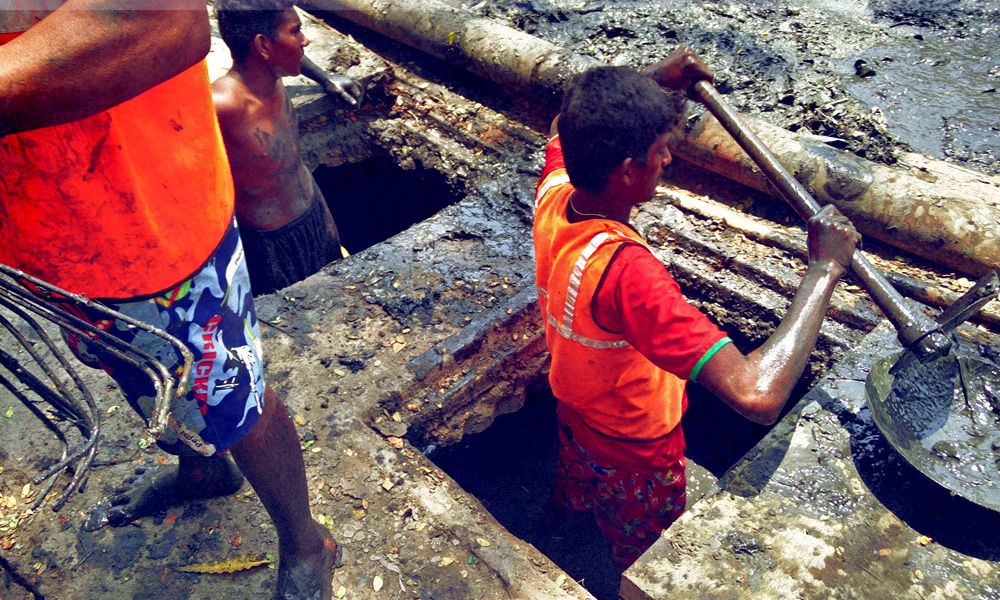
Image Credits: The Times of India
Claim Of Manual Scavenging Eradication 'Far From Truth': National Human Rights Commission
Writer: Palak Agrawal
Palak a journalism graduate believes in simplifying the complicated and writing about the extraordinary lives of ordinary people. She calls herself a " hodophile" or in layman words- a person who loves to travel.
India, 5 Jan 2021 11:37 AM GMT | Updated 5 Jan 2021 11:45 AM GMT
Editor : Prateek Gautam |
A free soul who believes that journalism, apart from politics, should stand for social cause and the environment.
The council recommended that strict action be taken against local authorities who employ people as manual scavengers and those involved in wrong reporting of the number of such workers in any region in the country.
Pulling the states on their tall claims on the complete eradication of manual scavenging, the National Human Rights Commission (NHRC) said the reality was "far from the truth", adding that the authorities engaged in wrong reporting of the number of manual scavengers, in any region, should be held accountable
As per a report by the Hindustan Times, the council made a number of recommendations to the Centre and the states including the broadening of the definition of manual scavenging to cover any other type of manual hazardous cleaning or enactment of a new comprehensive law on 'hazardous cleaning'.
It also mentioned taking strict action against local authorities who employ people as manual scavengers.
Steps For Rehabilitation
The NHRC has recommended a penal section to be put in a law to prevent unfair treatment and harassment encountered by the children of the workers especially women manual scavengers.
It stressed on the importance of rehabilitation of such workers, suggesting that they could be brought at par with other workers by linking them to welfare schemes under which they can immediately start earning like MGNREGA (Mahatma Gandhi National Rural Employment Guarantee Act) and to monitor the progress of their standard of living.
It further added that the one-time cash assistance that is being paid for the rehabilitation of the manual scavengers should be enhanced from ₹40,000 to ₹1,00,000 and the nodal authority should bear the burden of ensuring the compensation.
To ease the process of starting a business activity, the Centre has been asked to provide ₹10 lakh loan to family members of the manual scavengers. Additionally, an application and a toll-free number for registration of complaints related to the activity must be put in place. Meanwhile, the National Crime Research Bureau (NCRB) should monitor the sewer deaths.
Measures ought to be taken to remove the role of middle-men by making provision like Direct Benefit Transfer or by collaborating with NGO.
Other Recommendations
"The government needs to plan adequate investment facilitating the shift to the use of technology, maintenance of technology and training the workers to operate the technology," NHRC said.
"Officer in the Supervisory level or In charge of the area should submit a declaration to the respective civic body to the effect that the required safety gears are being provided before any person enters the sewer/septic tank," it said.
To ensure that the cases of manual scavenging are dealt sensitively, the council said that it should be investigated by a police officer who had special training under SC/ST Atrocities Act, 1989, PEMSR (The Prohibition of Employment as Manual Scavengers and their Rehabilitation) Act, 2013 and Supreme Court 2014 judgment.
Zero Manual Scavenging In India?
It becomes crucial to note that despite strict provisions and a law preventing manual scavenging, the practice is still rampant in India. It brings attention to the divide lined by caste and class.
People who are employed to clean septic tanks, sewers and remove human excreta from public streets are forced to risk their lives to earn a livelihood and in the process become victims of innumerable skin and a variety of other disorder
Notably, the number of people who were killed while cleaning sewers and septic tanks has increased considerably over the last few years, with 2019, reporting the highest number of manual scavenging deaths in the last five years.
The Hindu reported that there was a massive 61 per cent rise in the number of deaths when compared to 2018—as many as 110 workers were killed while cleaning sewers and septic tanks while 68 cases occurred in 2018.
In yet another shocking revelation, a national survey conducted in 18 states has identified a total of 48,345 manual scavengers till January 31, 2020. Data collected in 2018 has highlighted that there are over 29,000 people engaged in manual scavenging in Uttar Pradesh making it the highest in any state in India.
Also Read: 'India Wants Safe, Speedy Rohingya Repatriation To Myanmar': Indian High Commissioner In Dhaka
 All section
All section














